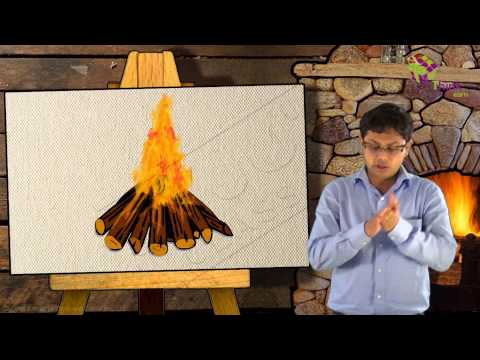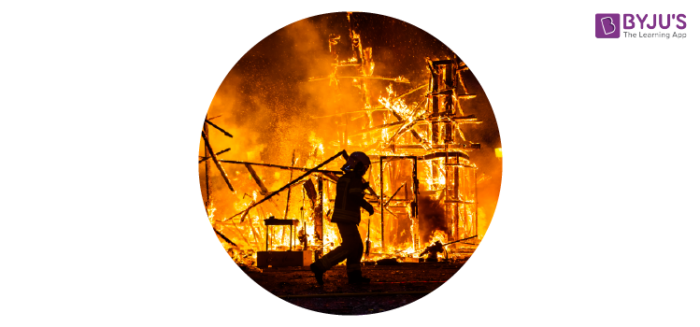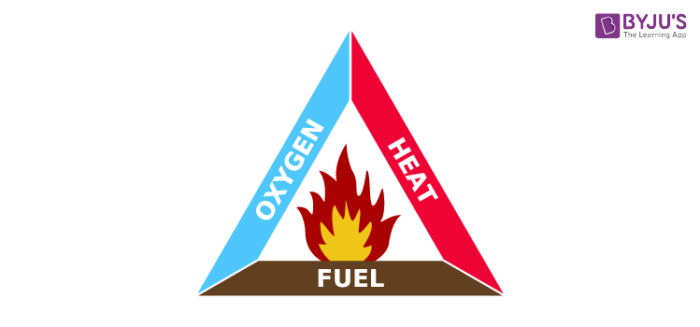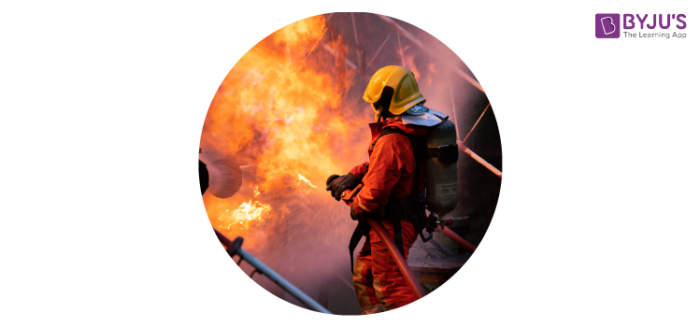
Fire is one of the most useful phenomena we exploit in our day-to-day life to accomplish various tasks. For example: for cooking, for illumination and various other tasks. All this happens because of the controlled production of fire. The fire which is a boon for us can turn into a bane too if it is not controlled. For example, you have heard of forest fires, fires breaking out at homes causing huge destruction. We generally call the fire brigade in such cases to control the blazing flames. The Fire department officials generally use fire extinguishers to extinguish the fire depending on its severity and magnitude.

The Fire extinguisher is a device used by the fire brigade personal to control fire. According to the concept of the fire triangle, for the generation of fire, we need three things to be present simultaneously. These are fuel (something which can burn), a heat source (which can ignite the fuel) and air (for a constant supply of oxygen). So, if we remove any one of these resources, the fire can be controlled. Fire extinguishers generally cut off the supply of oxygen to control fire.

Types of Fire Extinguishers
Depending on the way how the fire extinguisher alters any of the controlling elements from the fire triangle, fire extinguishers are of a considerable variety, namely:
- Water and foam: Takes away the heat and the oxygen element.
- Carbon Dioxide: Takes away the heat and the oxygen element.
- Dry Chemical: Interrupt the chemical reaction responsible for the fire.
- Wet Chemical Removes the heating element and blocks oxygen and fuel from re-ignition.
- Clean Agent: Interrupts the chemical reaction of the fire.
- Dry Powder: Separates fuel from oxygen and removes heat.
- Water mist: Takes away the heating element.
- Cartridge Operated Dry Chemical: Interrupts the chemical reaction of the fire.
Working of Water Fire Extinguisher
You must have seen fire brigade personal spraying water at the place where the fire has incurred to suppress it. What does this water do?

When the fire brigade personal starts spraying water over the places where the fire has occurred, water starts to cool down the temperature of the fire. As the temperature starts to fall down, due to the continuous spraying of water, it finally comes down below the ignition temperature of the fuel. So fuel cannot be ignited any more, thus it prevents the fire from spreading. Furthermore, the water vapours generated block the supply of oxygen to the fuel surface, thereby decreasing the supply of oxygen to it. We cannot use water fire extinguishers in all the cases to control fire.
For example, in the case of electrical fires and fire produced by inflammable substances. In such cases, we generally use a soda-acid fire extinguisher or a CO2 fire extinguisher which cuts off the supply of oxygen to extinguish the fire.
To learn more about different fire extinguishers and other ways of controlling fire, download BYJU’S – The learning App.




Comments